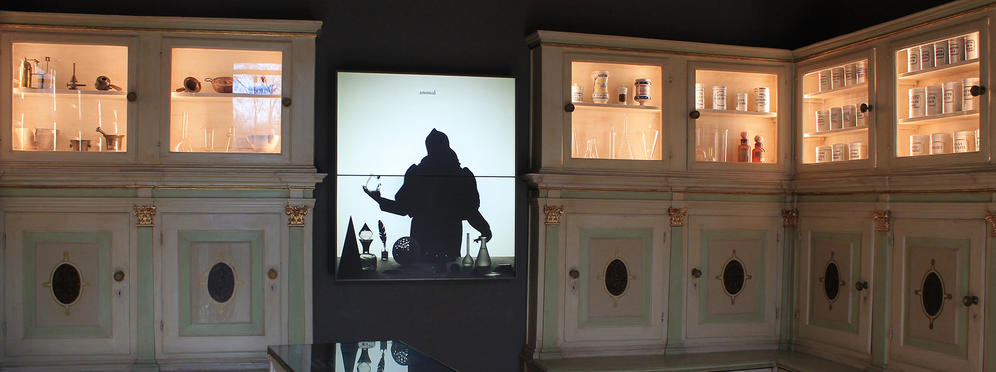The dispensary and the art of healing
The furnishings of an old rural pharmacy are displayed with the precious collection of drugs, preparations and instruments

The figure of the apothecary began to emerge in the 11th century, becoming gradually distinct from that of the physician and specializing in the preparation of medicines. The dispensary now took shape: a workshop-cum-store, which the physician Francesco Bonafede had wanted to introduce when the Botanical Garden was founded in Padua — a place where samples of wholesome species and adulterants could be stored, and remedies prepared. Almost five centuries later, thanks to a donation from the pharmacist Giuseppe Maggioni, the furnishings of an old rural pharmacy in the Padua area went on display, along with its contents, a priceless collection of drugs, preparations and instruments: mortar, press, balance, alembic... Visitors are shown the instruments used by the apothecary, who they see at work in a video, “The art of the apothecary”, created by Dotdotdot to render the visit an even more immersive experience.
Before entering, the visitor is also invited to play detective, by solving mysterious cases of poisoning and identifying the “guilty” plants. The game offers a way of learning about the properties of plants, looking at clues and analyzing historical or imaginary events, like the famous case of Seneca, who when ordered to take his life sought to hasten the end with hemlock (Conium maculatum), and the puzzling demise of Cangrande della Scala.
The tour continues with an exploration of “simple” remedies sourced from the plant, animal or mineral kingdom, and of “compound” medicines — in other words combinations of simple substances that expand their spectrum of action — and finally some examples of synthetic drugs like the first antibiotic, penicillin, and the first chemotherapeutic drug, Salvarsan.






